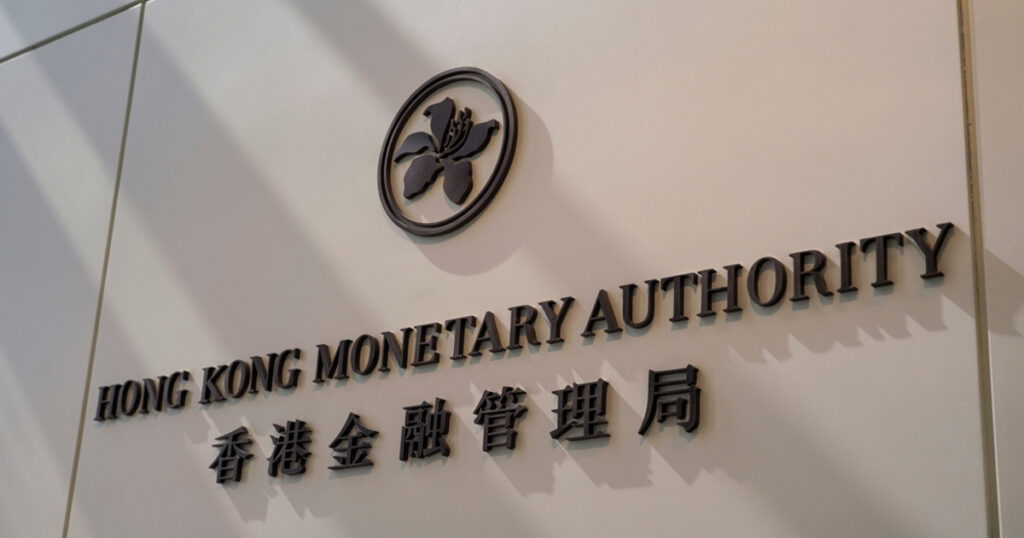The Hong Kong Monetary Authority (HKMA) will offer eligible digital bond issuances up to HK$2.5 million ($320,000) in a subsidy, as the city eyes becoming a regional leader in digital bond issuances.
Published on November 28, the Digital Bond Grant Scheme (DBGS) started accepting applications on the same day. To qualify for application, a digital bond offering must be issued in Hong Kong on or after October 16, 2024; on a distributed-ledger technology (DLT) platform offered by a party that has substantial presence in Hong Kong, or by the Central Moneymarkets Unit (CMU), the fixed income clearing system by HKMA.
Those meeting the requirements of the HKMA would qualify an applicant for a ‘half grant’ scheme at HK$1.25 million, according to the guidelines. To obtain a ‘full grant’ at HK$2.5 million, an issuance needs to fulfil additional requirements, such as being issued on a DLT platform not run by an associate of the issuer; or being issued at a minimum issuance size of HK$1 billion equivalent, among some others.
The grant could be used to cover fees to DLT platform providers, arrangers, legal advisors, auditors, accountants, rating agencies, listing platforms, or CMU lodging and clearing.
New year boost
A HKMA spokesperson told FinanceAsia that the scheme has received “good market interest” since its launch, with some market players planning grant applications for future issuances.
They added that it would be hard to predict the number of submissions due to market factors, or the relatively new nature of the issuance format. The HKMA will continue to leverage the new scheme to promote wider market adoption.
In 2024, Hong Kong hosted two landmark digital bond issuances, a two -year HK$6 billion digital green bond offering from the Special Administrative Region (SAR) government in February; and a first private sector digital bond, at HK$1 billion for one year, from HSBC in September.
Both transactions were banked at HSBC’s digital assets platform Orion, and settled through the CMU operated by the HKMA.
In January this year, Chinese broker GF Securities (Hong Kong) issued a $100 million tokenised commercial paper on a public blockchain developed by ABT Tech. In February 2023, the HKSAR government tokenised a HK$800 million green bond offering, leveraging a digital assets platform provided by Goldman Sachs.
HSBC’s Orion and Goldman Sachs’ digital assets platform are the two most prominent options provided by financial institutions in the city; both are based on private blockchains.
Mark Chan, partner at law firm Clifford Chance, whose team advised on the HSBC issuance, said that while the government and financial institutions had led current issuances in the market, participation from more diverse issuers, such as corporates, could be expected.
The costs involved has been a major concern from corporate issuers, he explained. Commercial returns are required to justify issuing a bond on a DLT platform instead of in conventional ways, given the additional cost and risk factors involved in carrying out a digital offering.
Chan agreed that a full grant from HKMA, if secured, would be able to “substantially” lower the economic threshold for corporates to participate in this space.
Testing ground
Europe remains the leading region globally when it comes to digital notes issuances – the European Investment Bank (EIB) issued its sixth digital bond on November 22, at €100 million ($105 million) due in five years.
European issuers are also testing a convergence between digital bonds and wholesale central bank digital currencies (wCBDCs), with the World Bank exploring a seven-year CHF200 million ($223 million) offering using wCBDCs, supported by the Swiss National Bank.
Cristiano Ventricelli, vice president and senior analyst, DeFi & Digital Assets at Moody’s Ratings, said that such experiments would offer a pathway to faster, more secure and more efficient settlement processes.
He added that in some jurisdictions such as Germany, clearing, settlement and custody are slowly being allowed to be carried out by technological solutions providers, enabling further automation.
Hong Kong’s efforts to become a regional leader in digital bond issuances are part of establishing a wider ecosystem for digital assets.
For example, the grant scheme acknowledges the city’s virtual asset trading platforms (VATPs), under a licensing scheme introduced in June by the Securities and Futures Commission (SFC). Being listed on a VATP is seen as an alternative to a traditional stock exchange offering.
Outside of fixed income, the HKMA is on way to roll out a licensing scheme for stablecoin issuers next year, with an ongoing sandbox.
Clifford Chance’s Chan explained that to facilitate future digital issuances, there are still specific legal complexities that can be clarified. This includes parts of the legal framework promoted historically that “unsurprisingly” didn’t envisage blockchain technologies.
The regulators have been supportive when it comes to dealing with existing regulatory frameworks, he said.
From a rating perspective, digital bonds introduce additional layers of risk in technological, legal and regulatory senses, on top of regular credit risks, according to Ventricelli. Blockchain infrastructure, smart contract reliability, or specific rights conferred to digital bondholders should be all taken into account.
“To date, the digital bonds that Moody’s has rated have been assigned ratings on par with their traditional counterparts,” he said.
Other debates in the field include the comparison between public and private blockchains, and the interoperability issues that follow.
¬ Haymarket Media Limited. All rights reserved.


